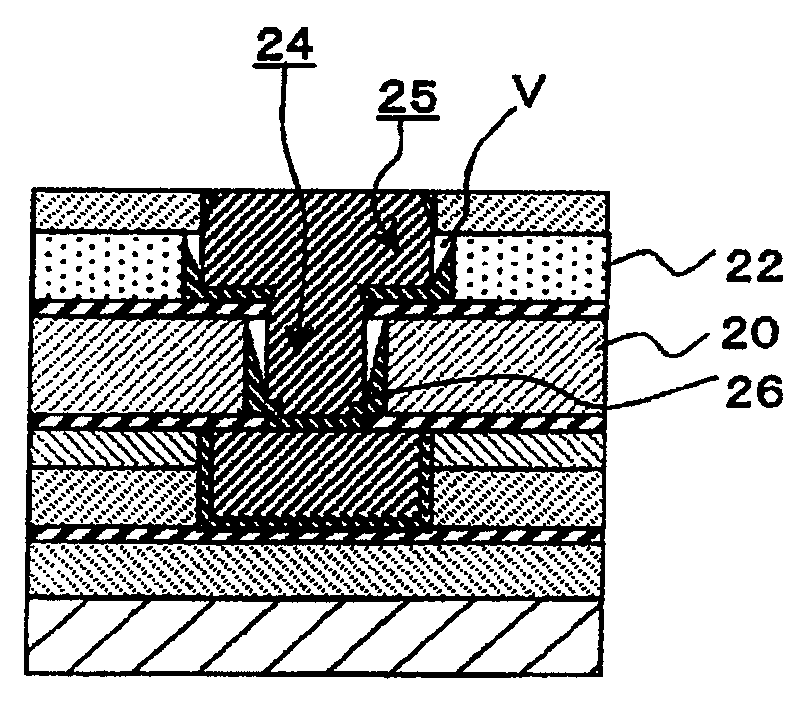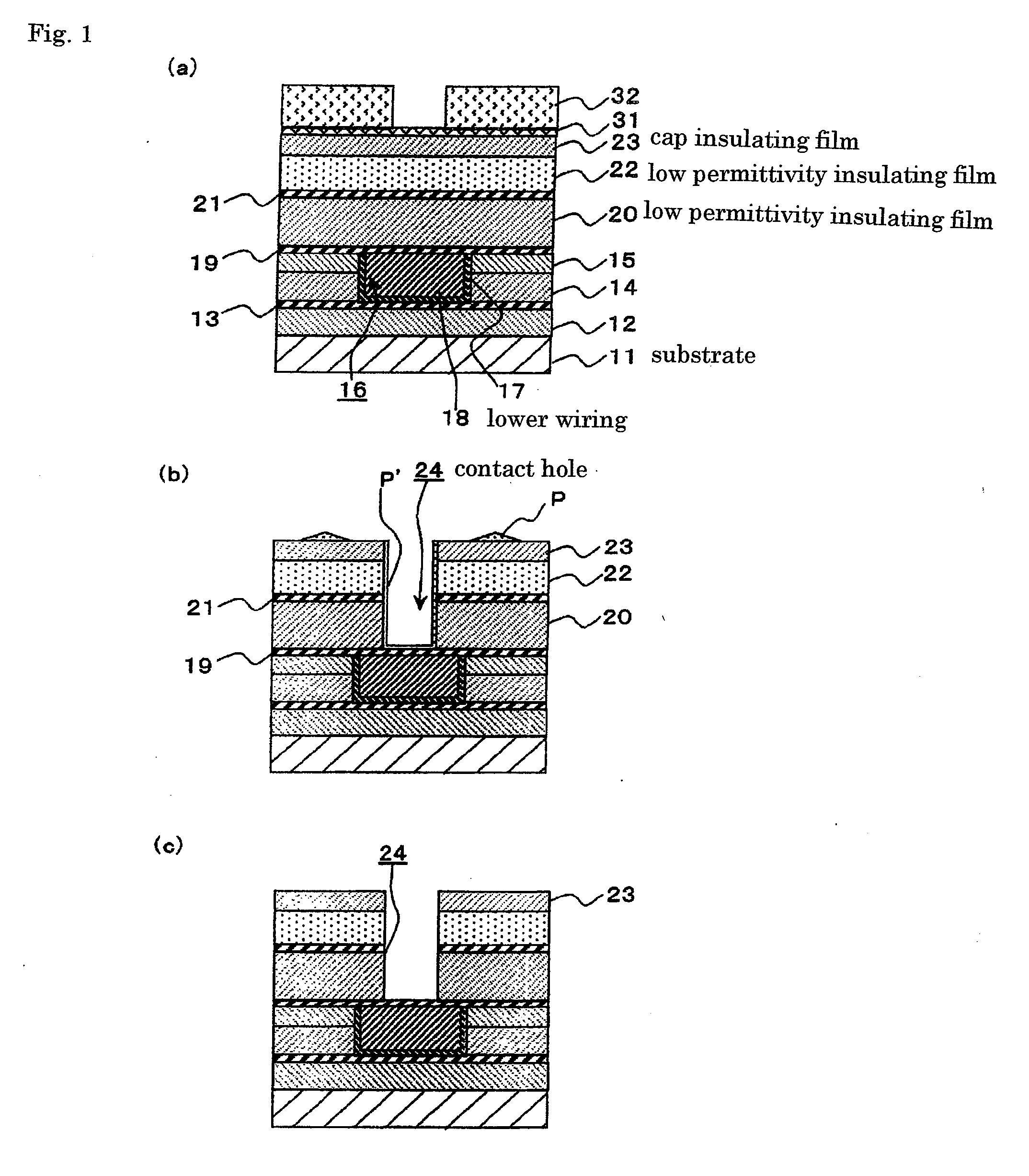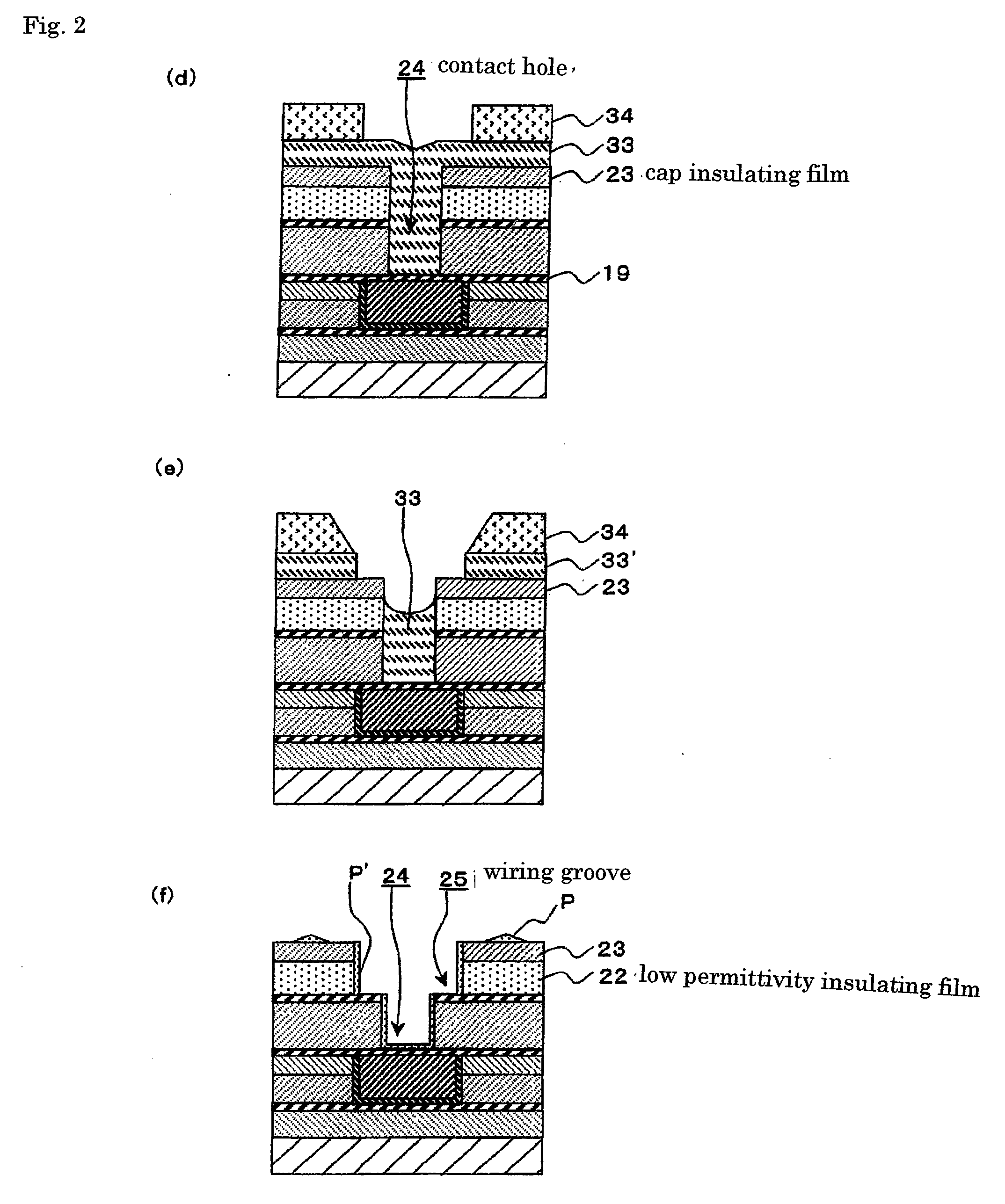Method of cleaning and process for producing semiconductor device
a technology for cleaning and semiconductor devices, applied in semiconductor devices, chemistry apparatuses and processes, detergent compositions, etc., can solve the problems of increasing electricity consumption, reducing the operating speed of semiconductor devices, and unable to remove polishing residues containing cu compounds such as cuo and cuoh
- Summary
- Abstract
- Description
- Claims
- Application Information
AI Technical Summary
Benefits of technology
Problems solved by technology
Method used
Image
Examples
examples
[0074]The present invention will be described more specifically with reference to examples in the following. However, the present invention is not limited to the examples.
first embodiment
Examples of the First Embodiment
Example 1
[0075]The cleaning treatment was conducted for 10 minutes by supplying a mixture obtained by adding 2% by volume of triallylamine to a supercritical fluid of carbon dioxide at 35° C. under 10 MPa to the surface of board S obtained by removing the etching stopper layer 19 by etching as shown in FIG. 3(h). Then, the rinsing treatment was conducted for 10 minutes by using the supercritical fluid of carbon dioxide alone.
example 2
[0076]The cleaning treatment and the rinsing treatments were conducted in accordance with the same procedures as those conducted in Example 1 except that a mixture obtained by adding 2% by volume of tris(3-aminopropyl)amine to the supercritical fluid of carbon dioxide was supplied.
PUM
| Property | Measurement | Unit |
|---|---|---|
| pressure | aaaaa | aaaaa |
| temperature | aaaaa | aaaaa |
| electroconductive | aaaaa | aaaaa |
Abstract
Description
Claims
Application Information
 Login to View More
Login to View More - R&D
- Intellectual Property
- Life Sciences
- Materials
- Tech Scout
- Unparalleled Data Quality
- Higher Quality Content
- 60% Fewer Hallucinations
Browse by: Latest US Patents, China's latest patents, Technical Efficacy Thesaurus, Application Domain, Technology Topic, Popular Technical Reports.
© 2025 PatSnap. All rights reserved.Legal|Privacy policy|Modern Slavery Act Transparency Statement|Sitemap|About US| Contact US: help@patsnap.com



